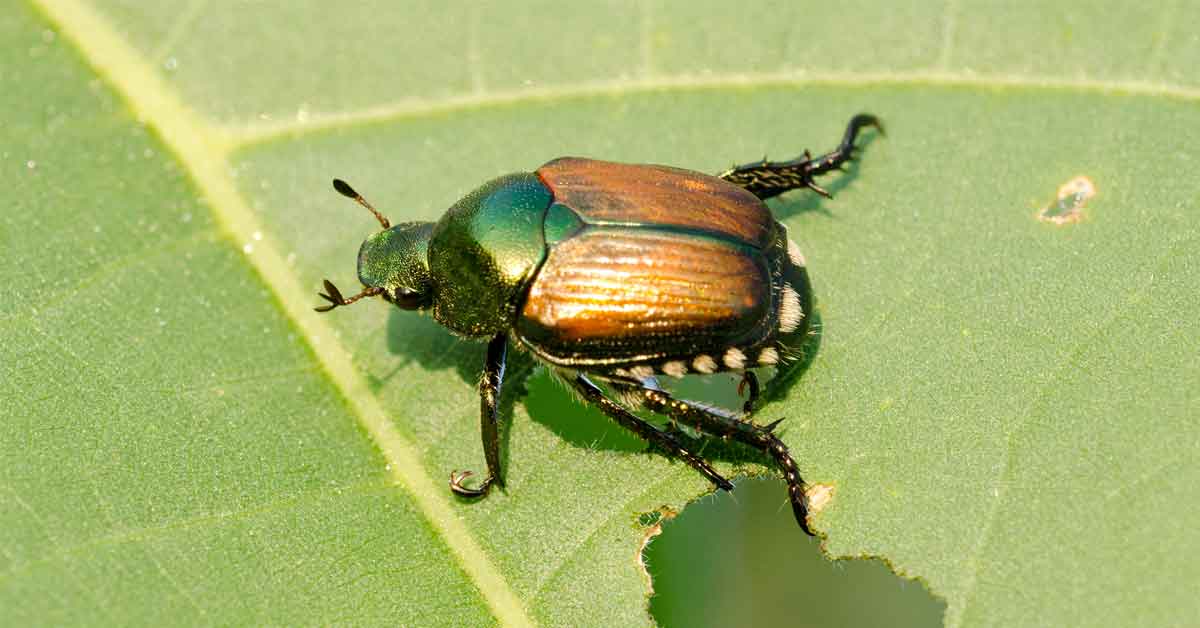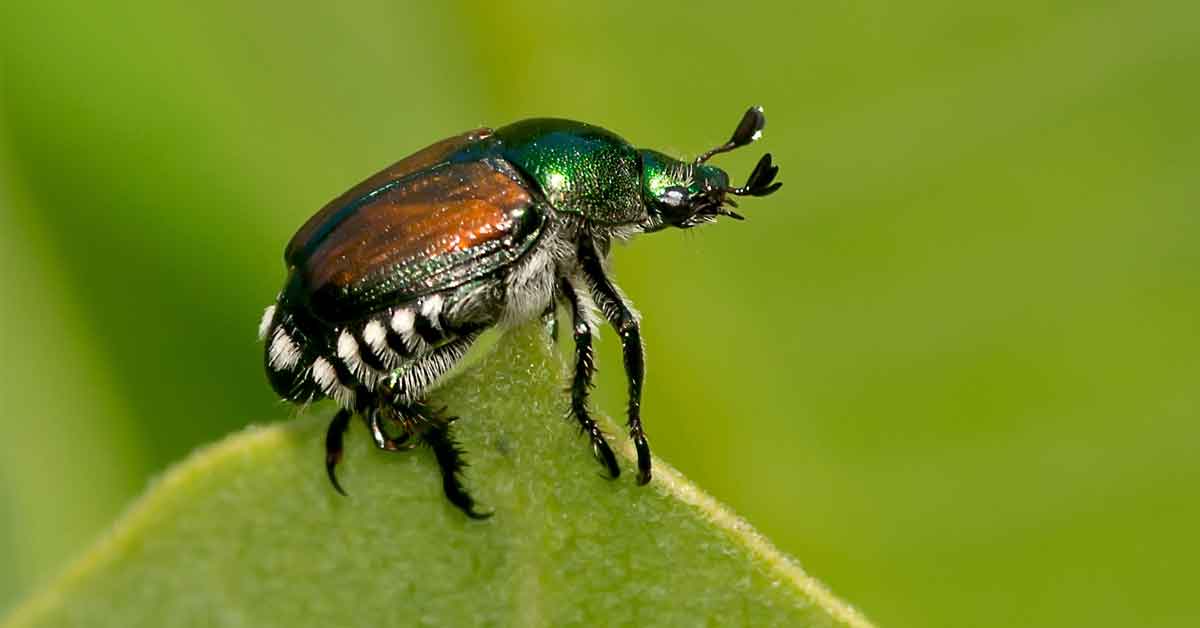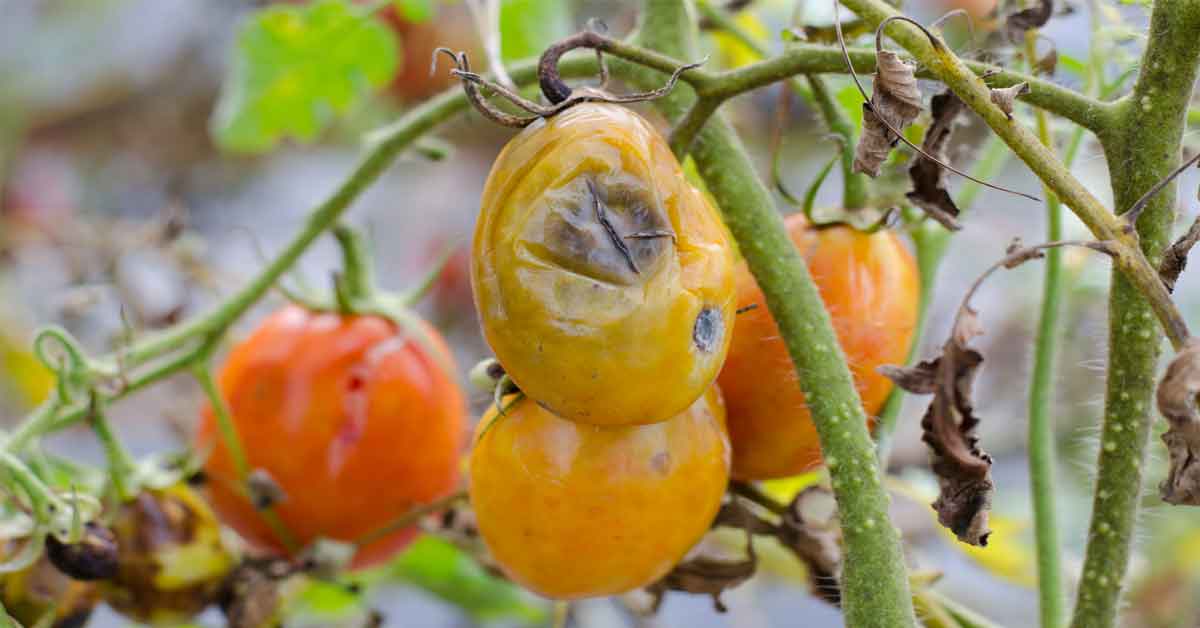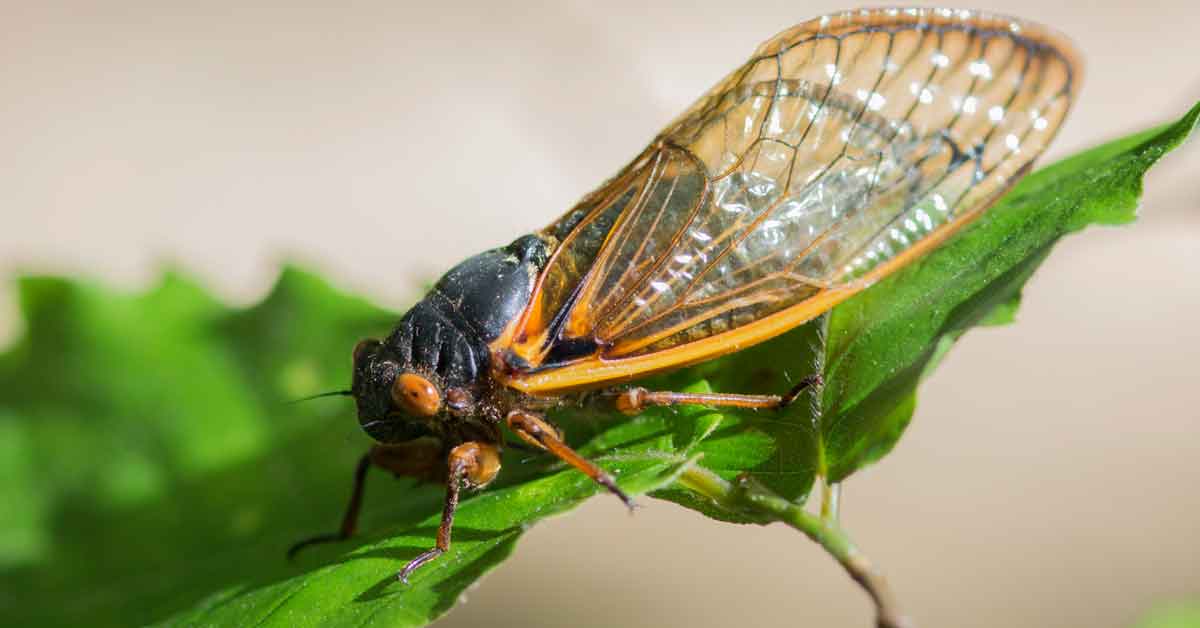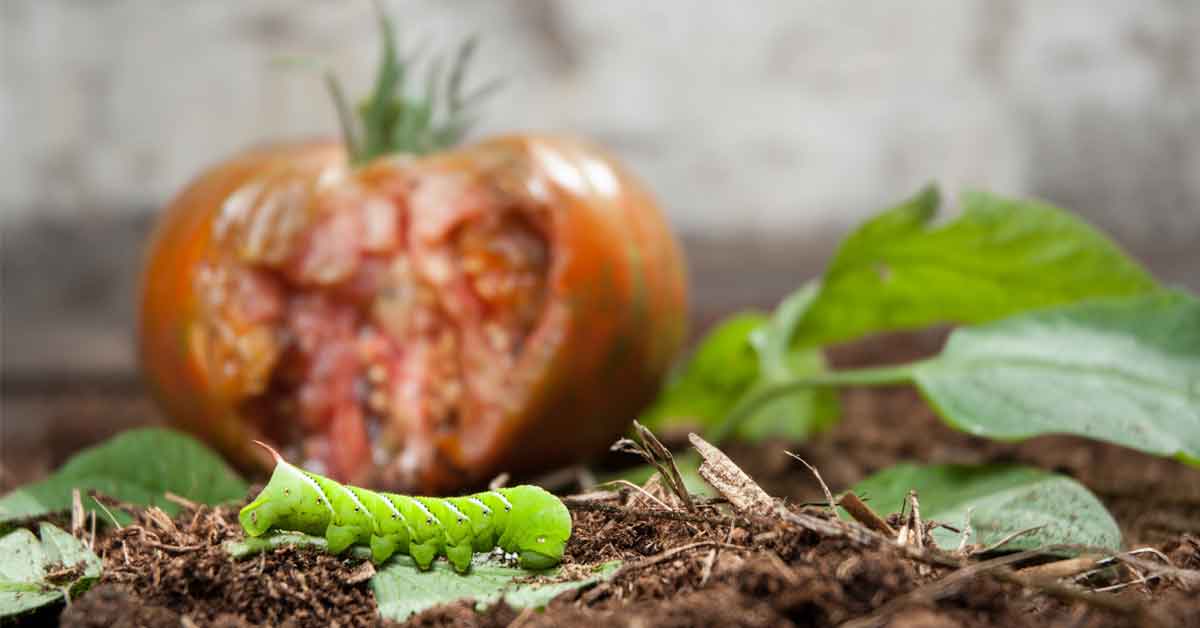How to Protect Your Trees and Shrubs From Japanese Beetle Damage
The Japanese beetle, a most destructive garden pest, devours just about everything in its path — including well-tended trees and shrubs. The damage this invasive insect causes is disheartening, but you can arm yourself with knowledge and keep Japanese beetles under control in your yard:
- Why Japanese Beetles Are Invasive
- How to Detect Japanese Beetles and Grubs
- Plants That Japanese Beetles Like
- Plants That Japanese Beetles Don't Like
- Effective Japanese Beetle Control
Why Japanese Beetles Are Invasive
The Japanese beetle is a native of Japan, where it has natural enemies that help control beetle damage and keep beetle populations manageable. The U.S. Department of Agriculture reports that the first U.S. sighting of this foreign menace was in a New Jersey nursery in 1916.1
Because very few natural enemies of the beetle exist in the United States, this pest has wreaked havoc on plants since it arrived. It took only four years for the Japanese beetle to cause severe damage in 22 states after making its way to America. Monitoring and rigid regulations have tried to slow its spread, but its range is expanding steadily.1
How to Detect Japanese Beetles and Grubs
At slightly less than 1/2 inch long, the Japanese beetle is hardly imposing. Under different circumstances, this destructive pest might be considered attractive. The oval-shaped insect is metallic green with bronze-colored wing covers and dark legs. A telltale characteristic that distinguishes the Japanese beetle is the series of small, white tufts of hair located under the wing covers along each side of its body and on its hind end.
In the spring or early summer, adult female beetles lay eggs in soil. Those eggs hatch and become unattractive larvae known as white grubs. The white grubs have brown heads and feed on plant roots, often causing severe lawn damage. If disturbed, the grubs curl into a C shape. The larvae stay in the soil until the following spring, when they pupate and become adults.
Because of this hungry invader's distinctive feeding pattern, Japanese beetle damage to trees and shrubs is easy to spot. The pests dine on the soft tissue between leaf veins, leaving foliage skeletonized and lace-like. Flower petals become ragged after beetles feed on them. Trees hit hard by Japanese beetle feeding appear as though scorched by fire.2
Japanese beetles are most active on warm, sunny days and like to feed in direct sun in groups. The adult beetles can fly, which allows them to move easily and quickly to congregate throughout your landscape. They begin eating at the top of plants and work their way down.3

Plants That Japanese Beetles Like
The Japanese beetle's voracious appetite makes it especially destructive. The adult beetle feeds on more than 300 species of plants — including roses, shrubs, vines, ornamental and fruit trees, and vegetable crops — devouring leaves, flowers, tree and shrub buds, and fruit.2
If you have Japanese beetle problems, avoid planting large numbers of plants known to attract these pests. These are just a few of the ornamental plants, shrubs and trees preferred by these pesky pests:
- London Planetree
- Mallow
- Norway Maple
- Pin Oak
- Rose
- Rose of Sharon
- Evening Primrose
- Gray Birch
- Hibiscus
- Hollyhock
- Horse Chestnut
- Japanese Maple
- Lombardy Poplar
- American Linden
- American Mountain Ash
- Black Walnut
- Ornamental Cherry
- Ornamental Crabapple
- Crape Myrtle
- Dahlia
Plants That Japanese Beetles Don't Like
Though Japanese beetles eat almost any plant, there are some plants they don't like as much as others. Consider intermixing these less-tempting ornamentals into your landscape to discourage Japanese beetles:
- Nasturtium
- Oak (White, Red, Scarlet and Black)
- Pansy
- Red and Silver Maple
- Tuliptree
- Virginia Creeper
- Foxglove
- Holly
- Hosta
- Impatiens
- Juniper
- Lantana
- Lilac
- American Sweetgum
- Begonia
- Boxwood
- Columbine
- Coral Bells
- Dogwood
- Euonymus
Effective Japanese Beetle Control
Keeping Japanese beetles under control in your yard requires a multipronged approach. Japanese beetles are persistent, so effective and trusted pesticides are important to any control plan.
Highly effective Sevin brand garden insecticides are tough on Japanese beetles, but gentle on gardens. You can choose the product type that works best for you. Sevin Insect Killer Ready To Use 2 kills Japanese beetles and more than 130 insect pests on contact without harming your plants. Available in three sizes, the convenient sprayer containers are ideal for spot-treating individual plants or smaller garden areas.
Sevin Insect Killer Ready To Spray, designed for hose-end spraying, makes treating trees and shrubs simple. This powerful pesticide kills Japanese beetles and more than 500 other insect pests by contact, then it keeps protecting your plants, blooms and lawn for up to three months.+ For the same highly effective, long-lasting protection with a backpack or tank sprayer, turn to Sevin Insect Killer Concentrate instead.
To fight Japanese beetles at the grub stage as well as adulthood, Sevin Insect Killer Lawn Granules work above and below the surface to kill beetle larvae and more than 100 other listed pests. Applied according to directions, the granules kill pests by contact and protect your lawn, edible and ornamental gardens, and other areas around your home for up to three months.
Japanese beetles are tenacious, but GardenTech and Sevin brands are here to help. With preparation, prompt action and highly effective products, you can put a stop to Japanese beetle damage on trees and shrubs and get back to enjoying your landscape.
+Except fire ants and ticks
Always read product labels thoroughly and follow instructions, including guidelines for pre-harvest intervals (PHI) and application frequency.
”Always read product labels thoroughly…” GardenTech is a registered trademark of Gulfstream Home & Garden, Inc.
Sevin is a registered trademark of Tessenderlo Kerley, Inc.
Pennington is a registered trademark of Pennington Seed, Inc.
UltraGreen is a registered trademark of Central Garden & Pet Company.
Sources:
1. USDA Animal and Plant Health, "Managing the Japanese Beetle: A Homeowner's Handbook," United States Department of Agriculture.
2. M.F. Potter et al., "Japanese Beetles in the Urban Landscape," University of Kentucky College of Agriculture, Food and Environment.
3. V. Krischik and D. Maser, "Japanese Beetle Management in Minnesota," University of Minnesota Extension.
4. W. Cranshaw, "Japanese Beetle," Colorado State University Extension.
Get Monthly Gardening Advice!

